
 |
|
"Knowledge is power. Information is liberating. Education is the premise of progress, in every society, in every family." - Kofi Annan |
30 August 2019 |
TCO Gazette Links
Click here for TCO archive Click here for news archive |
News Headlines
BMSB is Upon Us
It's that time of the year again, with stink bug season fast approaching, officially commencing on 1 September.
With fears of the detrimental impact it would have on our agricultural sector, vigilance is essential in order to keep Australia free of brown marmorated stink bugs. During this BMSB risk season, many goods imported from the northern hemisphere would need to be treated. It is essential that importers, customs brokers, freight forwarders and master consolidators have a thorough understanding of policy changes, examine compliance options and establish commercial arrangements with key suppliers onshore and abroad,” said Mr Crawford from Freight and Trade Alliance. “Planning is essential to avoid ongoing lengthy clearance delays and high detention costs," he said. When representatives of the Freight and Trade Alliance met with the Department of Agriculture recently, one of the key issues raised was the lack of availability of a list of approved offshore treatment providers for the upcoming brown marmorated stink bug season. The department has since released preliminary details of approved treatment providers registered under the scheme that have demonstrated their capacity to conduct BMSB treatments for the 2019-20 BMSB season. Details of providers can be found at the department’s website. Victoria's Food and Fibre Exports
Figures from the Commonwealth government show Victoria remains Australia’s largest food and fibre exporter, providing 27% of Australia’s food and fibre exports and accounting for 50% of Victoria’s total export base.
The latest figures show the sector experienced moderate growth of 3% in 2018, supported by a lower Australian dollar. That growth was largely underpinned by meat and wool exports, while dairy and wheat fell short following a strong run in 2017. Meat exports were a key contributor to growth, driven by a 42% rise in beef and 19% increase in other meat products. Rising incomes and increased demand for quality meat led to strong growth from China (up 44% in 2018), Japan (up 42%), South Korea (up 50%) and Malaysia (up 43%). Wool exports also rose by 7% in 2018, due to higher wool prices and stronger demand for fine and superfine wool from markets such as China, the US and Europe. The prolonged drought conditions in Victoria, however, remain a risk factor for future meat and wool exports. Unless weather conditions improve, the Australian Bureau of Agricultural and Resource Economics predicts that sheep and cattle livestock numbers will drop. This may weigh on beef and wool exports in 2019. Wheat and dairy exports fell in 2018, with unusually dry conditions affecting supply. Wheat exports contracted by around 50%, as lower crop production and increased local demand meant that the exportable supply was limited. Milk, cream and yoghurt exports also declined by 2%. The exception was cheese and curd which grew by 8%, reflecting a growing preference for higher value dairy products in Asia. Drug Charges for Airline Customer Service Officer
A man has been extradited from Victoria after being arrested at Melbourne International Airport over his alleged role in the importation of $155million worth of methylamphetamine.
The NSW Police Force State Crime Command’s Drug and Firearms Squad, Australian Border Force, with assistance from the Australian Federal Police, commenced a joint investigation into the importation of methylamphetamine. Acting on information from NSWPF investigators, ABF officers targeted a container from the United States for examination on Monday 29 July 2019. It was x-rayed at the Sydney Container Examination Facility and anomalies were found. Upon inspection of the container, two large industrial machines were discovered. Further investigation was required to uncover a concealment within the 15 tonne injection moulding machine, of seven plastic garbage bags containing a white crystalline substance. Subsequent testing revealed a positive result for methylamphetamine, with a total weight of 207kg and a street value of more than $155million. A 22 year old man was arrested by AFP officers after he boarded a flight bound for Singapore at Melbourne International Airport on Sunday 4 August 2019. Police allege that the man travelled under a false name on a domestic flight from Sydney before attempting to flee the country via Melbourne. The man, who is an airline customer service officer was escorted by detectives on a flight back to Sydney and taken to Mascot Police Station. ANL Updates Australia to SEA Services
ANL has announced an updated set of services for the AAX1 and AAX2 south-east Asia services, through a joint-partnership between ANL, Hapag-Lloyd, Maersk Line and ONE.
The enhanced services offer improved frequencies and transit times, with direct port calls at Laem Chabang, Port Kelang and Jakarta. This service is scheduled to come in to effect with the first vessel departing Tanjung Pelepas on October 23, 2019. The new AAX setup will be complementary to the NEMO service providing an extensive coverage across the globe with transhipment options to south-east Asia, Indian sub-continent, Middle East Gulf, North East Asia, Africa, Med and North Europe. The New NEMO northbound rotation will be Sydney, Melbourne, Adelaide, Fremantle, Singapore, Colombo. The first vessel on the updated rotation is due in to Sydney on November 13, 2019. Anthony Orgill, ANL general manager of Asia ANZ Lines said, “The revised AAX1 and AAX2 services once again reinforces our support to clients operating between Australia, South East Asia and beyond. “With over 40 years of continued operation in the region, we believe that the new AAX setup will continue to assist our customers and attend to their broader needs, highlighting ANL’s leading position within Oceania.” Cocaine Smuggling within a 2 tonne Machine
A plasma cutting machine weighing over 2 tonnes was used to smuggle cocaine into Sydney back in early June.
The container arrived in Sydney from India where it was x-rayed and anomalies were found. Upon inspection, ABF officers found within the container, a 2300kg plasma cutting machine traditionally used to cut through electrially conductive materials. When they dismantled the machine, a metal cavity was discovered which contained a white powder, on which presumptive testing revealed a positive indication for cocaine. AFP investigators conducted a further search and found 110 blocks of white powder hidden within four panels. A total of 55kg of cocaine was seized with an estimated street value of more than $20million. Three men have been charged with attempting to possess a commercial quanitity of a border controlled drug and have faced court for their charges. AFP detective superintendent Ben McQuillan, coordinator organised crime said the seizure was a significant win. “This seizure is equivalent to 5500 street deals which we have successfully stopped reaching the community,” Superintendent McQuillan said. Japan to Develop Zero Emissions Electric Tankers
A partnership of Asahi Tanker Co, Exeno Yamamizu Corporation, Mitsui OSK Lines(MOL) and Mitsubishi Corporation have come together to provide new infrastructure services in marine shipping that focus on electrically powered vessels.
The group will address what it calls the five e’s: electrification, environment, evolution, efficiency and economics. Appropriately named the e5 Lab, the new company will develop and promote the use of clean modes of marine transport. The first objective for e5 Lab will be to build the world’s first zero-emissions tanker by mid-2021. The tanker will be a coastal vessel powered by large-capacity batteries and will operate in Tokyo Bay. The group will also develop other kinds of electrically powered vessels. The e5 Lab has identified challenges facing Japan’s shipping industry, which e5 Lab will address by consolidating the technologies, know-how and networks of its four major shareholders. The e5 Lab said it will pool the technologies, human resources and operational know-how needed to achieve the 50% greenhouse gas reduction target of IMO as soon as possible – that is annual emissions dropping to half of their 2008 levels by 2050. Shanghai Ranks Highest for World's Best Connected Port
The Shanghai port has topped the United Nations Conference on Trade and Development(UNCTAD)’s 2019 ranking of the world’s best-connected ports.
The Chinese port gathered a connectivity score of 134 points, followed by the ports of Singapore (124.63 points), Pusan (114.45 points) and Ningbo (114.35 points). The index is set at 100 for the best-connected port in 2006, which was Hong Kong, China. Besides the Asian ports, the other ports on the top-10 list are those of Antwerp (94 points) in Belgium and Rotterdam (93 points) in the Netherlands. None of the ports in the top-20 list are from Africa, Latin America, North America or Australasia. “A container port’s performance is a critical factor that can determine transport costs and, by extension, trade competitiveness,” UNCTAD’s director of technology and logistics, Shamika N. Sirimanne said. Ms Sirimanne mentioned that efficient and well-connected container ports enabled by frequent and direct shipping services are key to minimising trade costs and fostering sustainable development. UNCTAD’s port Liner Shipping Connectivity Index dataset enables businesses and governments to determine maritime transport trends and their ports’ positions compared to 900 others. Low connectivity makes merchandise trade costly and uncompetitive. Many small island developing states face a vicious cycle where low trade volumes discourage investments in better maritime transport connectivity. The Pacific Islands are among those with the lowest shipping connectivity. For example, Port Vila (Vanuatu) receives about one container ship every three days, the data shows. Besides the new datasets measuring liner shipping connectivity, UNCTAD also released new data on port calls and turnaround time in the global container ports, in collaboration with MarineTraffic. The data shows that containerships have the lowest turnaround times. In 2018, a ship spent a median time of 23.5 hours in ports. Dry bulk carriers typically spent just over two days during a port call, while container ships spent the least amount of time – less than a day. “A shorter time in port is a positive indicator that could partly signal the level of port efficiency and trade competitiveness,” UNCTAD’s chief of transport, Frida Youssef said. | 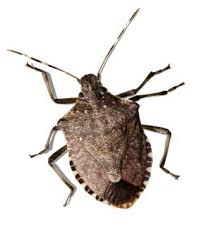 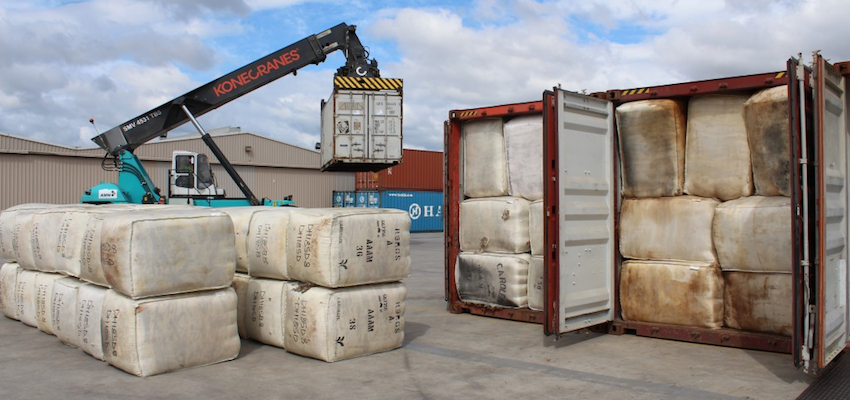  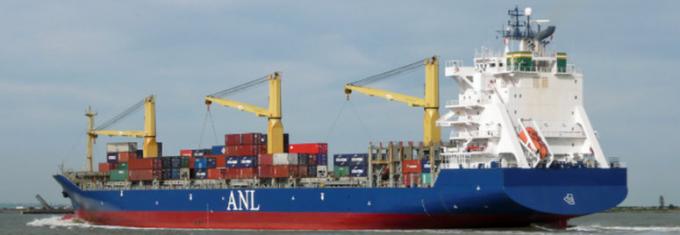 >  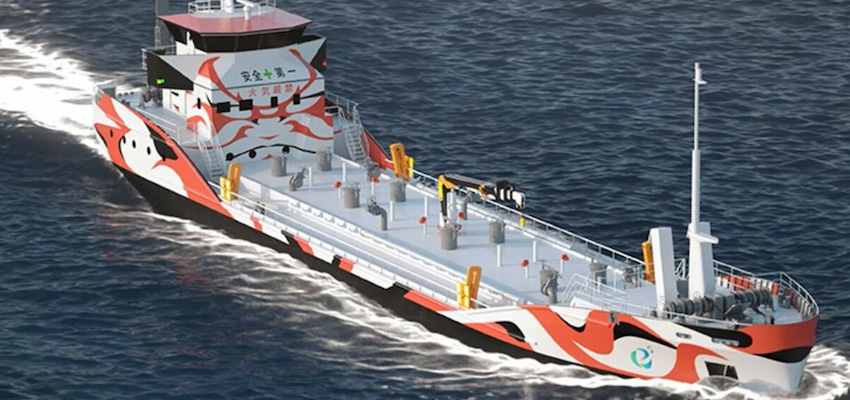 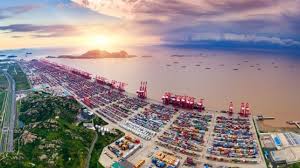 |